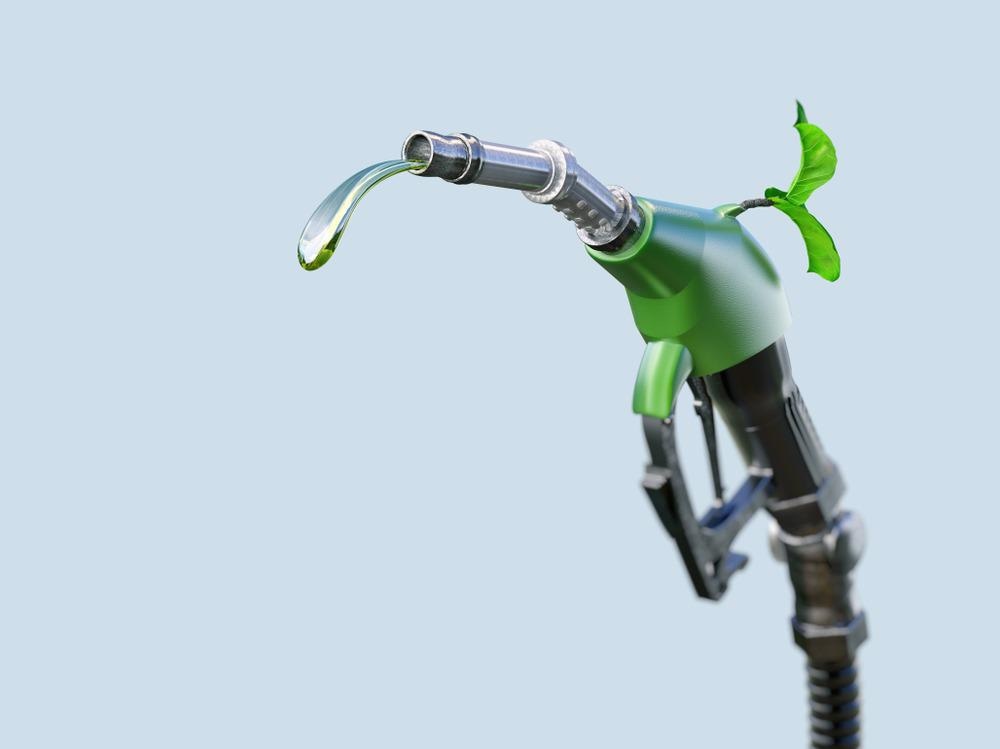Nanomaterials have the potential to improve the efficiency of biomass-based biofuel production as discussed in a review recently published in the journal Materials Letters.

Study: Perspective of nanomaterials for Sustainable Biofuel and Bioenergy production. Image Credit: Corona Borealis Studio/Shutterstock.com
Bioenergy derived from biomass offers numerous distinct advantages. Researchers have been driven to create alternative energy sources in response to the growing energy demand and excessive usage of fossil fuels.
Nanomaterial-based renewable energy solutions have improved the quality and quantity of biofuel and bioenergy production.
Bioenergy Conventional Way need Breakthrough with Nanotechnology
Bioenergy is one of many different options that may help society satisfy its energy needs. It is a kind of renewable energy obtained from organic elements called biomass, and it may be used to make transportation fuels, heating, electricity, and goods.
Due to the negative impacts of the overuse of fossil fuels on the ecosystem, bioenergy may play an important role as an alternative energy source. Biomass is the most common source of bioenergy.
However, early steps for biomass conversion into biofuels, such as enzymatic hydrolysis, preprocessing, and biomass culture, may cause a slew of issues.
Nanomaterials have the potential to help solve challenges linked with biomass sources for bioenergy conversion and storage.
Application of Nanotechnology
Nanotechnological applications in all industrial sectors can enhance efficiency. Current focus involves creating new energy production sources that will financially benefit the nation. Advanced nanomaterials have the potential to disrupt the whole energy economy and provide for greater energy savings.
Fuel consumption can be reduced via lightweight building material properties of nano components (wear-resistant, lighter mechanical components, and nanoparticles fuel). Switchable glasses constructed of nanoscale components manage the flow of heat and light in buildings, lowering energy usage.
Regarding the use of nanoparticles in bioenergy and biofuel applications, nano additives on anaerobic digestion (AD) influence biogas generation. The usage of nanomaterials for biogas synthesis is steadily expanding.
Nanostructured in Energy
Buildings, mobile devices, and autos all benefit from the use of nanostructured electrodes and catalysts. The combination of nanostructured semiconductors with a good boundary layer design allows waste heat to be used in autos and textiles. Nanotube-based electric cables and power lines reduce energy losses while current transmission.
Losses via conduction are also minimized when a superconductive material is created using nanotechnological methods. In the long run, energy delivery via wireless technologies such as lasers and microwaves is a viable alternative.
Nanoparticles’ Advantage in Bioenergy and Biofuel
Researchers discovered that introducing low CuO nanoparticles to a reactor containing anaerobic granular sludge had a longer-term detrimental influence on methanogenesis as adding the same concentrations of CuO nanoparicles to the reactors in the short term.
The effects of nano and micro-sized CuO particulates in the reactor on biogas production revealed that CuO nano-sized particles had a greater negative influence on biogas generation than nano-sized ZnO particles.
Nanotechnology can Minimize Energy Consumption and Future Research
Esterification of organic and inorganic hybrids produced from polyhedral oligomeric silsesquioxanes (POSS) for use as insulating oils and oil additives in transformers. The advantages of these instruments include minimal energy consumption, enzyme reusability, and the ability to use a variety of feedstocks.
On the other hand, Lipase enzymes are seldom used in industries owing to their high cost. The enzymes are adorned using immobilization techniques to give a high surface area to volume ratio and active site binding of their functional groups.
This adds to the overall stability. Nano-immobilized lipase has more activity than free enzymes due to its Brownian motion. Because the technologies are still in their early phases, further tests and applications and a techno-economic assessment are required.
Limitation of Nanotechnology in Bioenergy
However, there are some preliminary findings on nanomaterials as petroleum distillates, in vivo toxicity of nanoparticles, and the molecular-scale mechanism of nanomaterials-protein interactions. It is clear that nanotech-based bioenergy needs additional research to determine all options for replacing fossil fuel-based energy in the following decades.
Continue reading: How are Nanocatalysts Used for Environmental Applications?
Reference
Pandey, M. (2022). Perspective of nanomaterials for Sustainable Biofuel and Bioenergy production. Materials Letters. Available at: https://www.sciencedirect.com/science/article/pii/S0167577X22000398?via%3Dihub
Disclaimer: The views expressed here are those of the author expressed in their private capacity and do not necessarily represent the views of AZoM.com Limited T/A AZoNetwork the owner and operator of this website. This disclaimer forms part of the Terms and conditions of use of this website.